Every meta has things that players like and hate. For some players, those emotions can be caused by something very simple: the strength of certain cards or a deck in general: the strongest decks that dominate the meta will be the decks. most loved/hated, depending on whether the player likes it or not. However, there are other reasons to feel a card or deck is positive or negative that has nothing to do with their strength or weakness. Sometimes there are core points about card design that can trigger these emotions.
That’s not to say that the absolute strength of a card isn’t important, but you don’t have to associate love/hate a card with whether it’s a tier 0 deck or not. With that in mind, let’s take a look at some of the notable cards in Saviors of Uldum.
Quest Druid Made for AFK Players?!
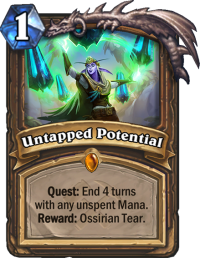
Let’s start with the Druid’s Quest, Untapped Potential. This is a terrible card from the way it’s designed, because it doesn’t even make the player feel like they have to. actually do the quest. It does not require the deck to be built in any special way, even all other classes can do this quest easily (of course Hero Power is useless after that). Druid doesn’t have to do it anything to complete it, because it is completed by don’t use up mana. To put it bluntly, this so-called “Quest”, if we still want to call it that, can be accomplished by AFK (hanging up to do nothing) with any class. Not only that, when the Quest is completed it becomes a Passive Hero Power, the Druid doesn’t even need to spend any mana to activate it, contrary to all the Hero Powers of the remaining classes after completing the Quest.
So it’s more like a countdown timer than a true Quest, and when the countdown is over, all the Druid cards played after are doubled in strength. It is silly to compare for example with the previous Quest Rogue, even half of the deck is used only for Quest, and the speed of Quest is of course not equal to Druid.
Looking back at all of Druid’s Choose One cards, these cards are made to offer versatility, albeit at the expense of both abilities being suboptimal relative to mana cost. With both being picked with 0 mana, they strengthen considerably and the Druid doesn’t take any damage or disadvantage.
That’s not to say the Quest Druid is invincible, but it’s clear that the design of such a Quest card is terrible. It doesn’t require any special deck building to complete the Quest, doesn’t require any extra spending after completing the Quest (!), and makes choosing one of the two effects of all quests. All the Choose One cards become less interesting.
Does Prismatic Lens remind us of Barnes?!
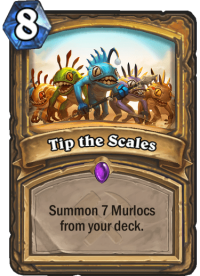
Another deck that also has design problems is Murloc Paladin. This deck uses a combination Prismatic Lens and Tip the Scales and there are no other spells in the deck to ensure stability when playing cards. The result of having a Prismatic Lens on turn 3 or 4 (depending on whether the Paladin goes first or later) is a card with the following text: draw and play 7 minions in the deck. And that card only costs 1-3 mana. While some decks can handle that Murloc table, in most cases Paladin wins instantly, like what Barnes brought to Big Priest. The difference here is that Paladin has 2 such cards instead of 1. Murloc Paladin’s average win rate with Lens in hand from the start is up to 67%.
The silly interaction between the two aforementioned cards becomes even more bizarre considering the impact that interaction has on the way the Paladin deck is built. In announcement of Divine Favor inducting into the Hall of Fame, the Hearthstone design team has said that they don’t want to draw cards as one of Paladin’s strengths. So now we have an Aggro-oriented Paladin deck and play cards like Zephrys the Great (with a lot of matching cards in the deck) and Chef Nomi because the player can quickly draw the entire deck or at least draw all the cards that match the two Tip the Scales cards.
Again, it must be admitted that while this deck is not invincible, this gameplay is clearly inhibiting for opponents in general. When the opponent does not have a suitable answer for “the opponent plays Lens turn 4”, perhaps surrendering immediately is the most reasonable option. It’s very similar to how the player called for the Barnes nerf (and was granted).
The bright spot of Saviors of Uldum
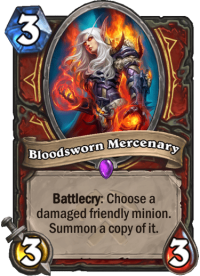
Not everything from a design perspective is bad. The plus point for the design of Saviors of Uldum is probably the gradual return of Aggro/Tempo Warrior. This deck represents a basic and perhaps most targeted approach of the game publisher: trying to get the table early, trying to finish off opponents late in the game, potentially unleashing a combo full of surprises but not so much that it makes the opponent helpless to “wait to die”, and that combo can only appear in special circumstances and not what the deck is aiming for.
It has a pretty good win rate and doesn’t give losing opponents a feeling of helplessness (like when facing Pirate Warrior before), as most of the matches it has to score instead of playing straight burn cards. face (weapons, spells or Charge minions).
After Extra Arms Back to 3 mana, Combo Priest is still living quite well in the meta and belongs to the group of the strongest decks, but it does not cause discomfort to the opponent. The Warrior and Priest decks mentioned above may not be interesting to some people because of their simple and unslick gameplay, but they represent the key point that makes Hearthstone’s appeal. They are decks containing 30 cards that are used for a single purpose throughout that both the player and the opponent can calculate to execute as well as deal with. While it’s undeniable that the “Created By” cards (from Discover, add random, …) can create interesting moments throughout the game, it is also a matter of how many such cards are enough. Consideration. If a game has so many “random” cards (which the opponent has no control over) they can become uninteresting.
Do the “Created By” cards really bring joy?
The aforementioned “Created By” cards are becoming more and more common in recent expansions, even up to a third of the cards being released in an expansion. They create additional resources that should not be in the deck and are increasingly accepted as a matter of course.
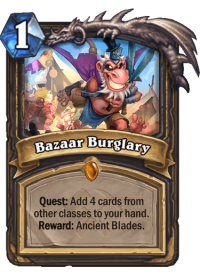
From that perspective, some cards like Rogue’s New Quest Bazaar Burglary obviously requires Rogue to use random cards from other classes, which can be interesting for players because each match will be a different experience with different cards. Making good use of what you get and stocking up on surprises for your opponents is what attracts many for-fun players to this deck.
However, the above surprises do not necessarily make competitor by Thief Rogue is feeling amused. They have no idea what the opponent has on hand and don’t have any data to predict, and become passive when dealing with threats. When your table is suddenly cleared by a spell that Rogue shouldn’t have, does your opponent feel happy or feel cheated? If Rogue steals all the weak cards and loses (inevitably), will the opponent find the game interesting or boring? Is this the experience Hearthstone should give players? Again, if the ground rules are broken too often, they lose meaning and leave players tired and bored. Everyone who has ever played Control Warrior vs Control Warrior knows this well, the fate of the match can be decided by who draws. Dr. Boom, Mad Genius first or who gets the better cards from Archivist Elysianarather than relying on pure skill.
That’s why Tempo Warrior and Combo Priest are plus points for this meta. They take the basic build and gameplay of the game, and make it possible for players and opponents alike to enjoy Hearthstone at its best.
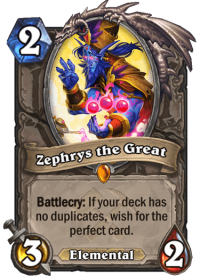
And finally, it’s impossible not to mention the star of this expansion, Zephrys the Great, who can deliver the perfect card in any situation. Zephrys’ text suggests that he is most commonly played in Highlander decks (with only 1 copy of all cards). Many players love this deck because it brings variety to the meta and makes the game more unpredictable and exciting. Other players aren’t very interested in these decks, arguing that they’re not hard to beat the no-card minus with 2 copies, that they don’t help potential cards appear in the meta, and in many cases. The opponent’s match is forced to ask “did the Highlander deck have picked up their unstoppable trump card?”.
The trump card mentioned here, if it was a few years ago, might be Reno Jacksonor expand to the usual decks Prince Keleseth. Feeling helpless against such large effect cards is no fun for many players. Perhaps Highlander decks should be designed with “If the deck doesn’t have two matching cards at the start of the match, …”, rather than a time-played effect, as that would allow cards like Zephrys played in quick draw decks instead of just the basic Highlander deck.
Source link: Hearthstone: The best and worst of the Saviors of Uldum meta
– https://emergenceingames.com/
